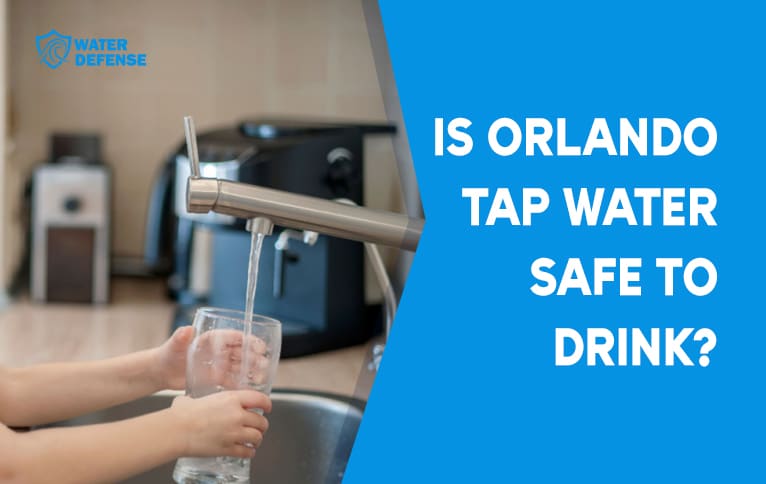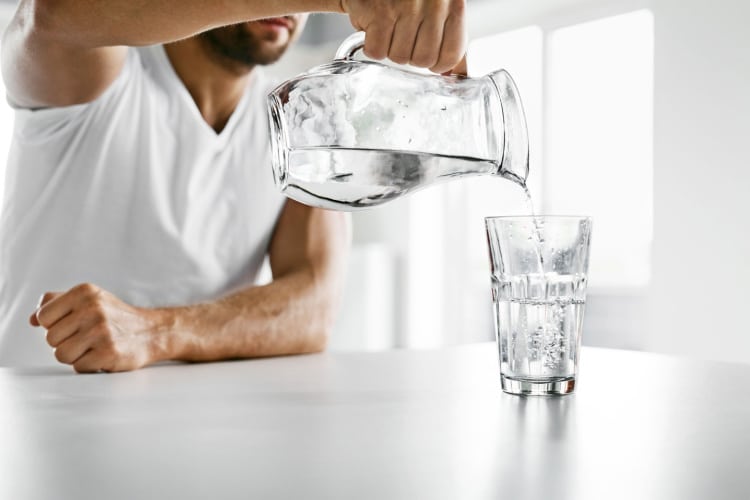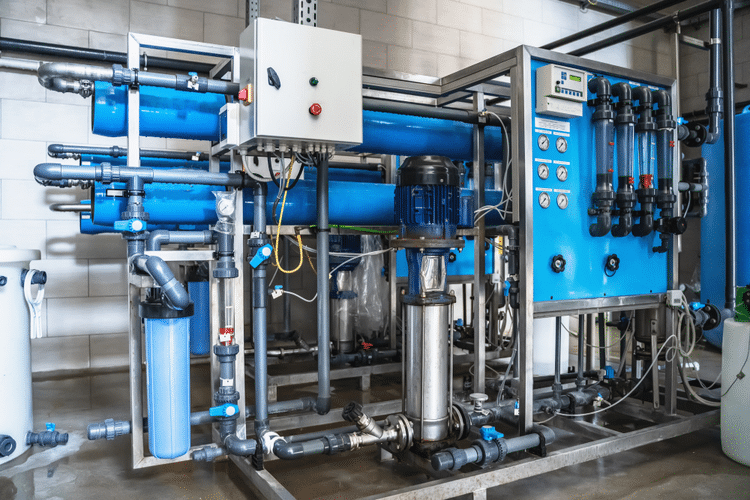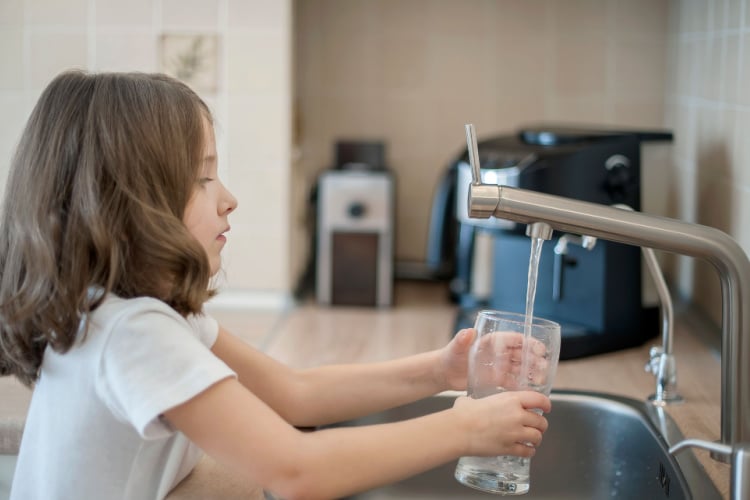Orlando, with a population of more than 300,000, is one of the biggest municipalities in the state of Florida, and when it comes to water quality, Florida is one of the worst states in all of the United States. But, if you live in Orlando, and you’re worried about the water quality, let us ease your concerns.
Orlando’s tap water is safe and in compliance with legal guidelines. The latest water quality report provided by the Orlando Utilities Commission shows that, except in a few individual cases, there are no instances of contamination levels above the safety guidelines set by the Environmental Protection Agency (EPA) under the National Primary Drinking Water Regulations (NPDWRs).

Yet, that doesn’t necessarily mean that the tap water in Orlando is completely contaminant-free, and the EPA’s public health goals regarding many contaminants are way lower than its safety limits.
Now, let’s see what’s in Orlando’s tap water, and how the contaminant levels compare against the EPA action and safety limits and public health goals set under the NPDWRs. We’ll also share information about water hardness in Orlando, and go into where the tap water in this city comes from and how it’s treated.
Orlando Water Quality Report: What’s in the Water?

The most recent Orlando water quality report shows that the tap water across the city has heavy metals such as lead and copper, and disinfection byproducts like total trihalomethanes, haloacetic acids, and bromate. In some individual water samples, these contaminant groups test higher than EPA action limits.
Besides these, the water samples taken from various taps in Orlando have barium, nitrates, selenium, and asbestos. However, none of these impurities surpass the EPA action limits or public safety goals.
Lead and Copper
Before the 1980s, US piping and plumbing systems featured lead and copper components (in fixtures and solders, and sometimes even in pipes). However, in the 1980s, the world discovered that lead and copper present in these components were dissolving into the water and that they had adverse health effects.
Consequently, the EPA issued its lead and copper rule in 1991, forbidding these heavy metals’ employment in any kind of waterway. Yet, some buildings in the United States from the 1980s and earlier still have lead and copper in their infrastructure, as replacing a whole piping system is neither practical nor affordable. These old buildings’ residents now have to deal with lead and copper presence in their water, which is potentially dangerous.
Regarding copper, the EPA action limit and public health goal is 1.3 ppm (parts per million or mg/L). Orlando has an average of 0.6 ppm of copper in its taps. According to the water quality report, there are sampling sites that have more than 1.3 ppm of copper in Orlando, albeit these sites make up less than 10% of all samples.
The lead situation in Orlando is a bit better. No sites have higher lead levels than the EPA action limits, but the average lead level in Orlando’s taps is 3 ppb (parts per billion).
Although this number is lower than the EPA action limit of 15 ppb, the agency and medical authorities don’t consider any level of lead safe in drinking water. In fact, the agency has set its public health goal regarding this dangerous heavy metal at zero (see the NPDWRs table linked above).
In that sense, the average lead presence in Orlando’s taps might be worrying. Fortunately, you can put those worries to rest by installing a state-of-the-art lead water filter. As these filters are also effective against other heavy metals such as copper, by purchasing a lead filter, you’ll be taking care of your copper problem.
Disinfection Byproducts
Like all the other municipal water authorities in the United States, the Orlando Utilities Commission disinfects the city’s water with chlorine and chloramines. These chemicals kill pathogenic microorganisms like bacteria and protozoa and prevent them from infesting the water distribution lines.
However, these disinfectants that are supposed to keep the water clean and safe, actually produce their own impurities after interacting with organic matter. The most common disinfectant byproducts are total trihalomethanes (TTHMs), haloacetic acids (HAA5), and bromate, present in almost all the municipal water supplies in the country, including Orlando.
The EPA action limits for these chemicals are 80 ppb, 60 pbb, and 10 ppb, respectively. The TTHMs in Orlando’s taps come in a range of 16.73 ppb to 74.86 ppb, HAA5 comes in a range of 7.04 ppb to 38.43 ppb, and bromate in a range of 0.63 ppb to 11.4 ppb. That makes bromate the only disinfection byproduct that tests higher than the EPA action limit.
That being said, the agency also has a public health goal of zero for all of these chemicals since there are studies linking them to an increased cancer risk. So, it’s best practice to invest in a water filtration unit to eliminate them from your drinking water for your and your family’s well-being.
Orlando Tap Water Contaminant Chart
Here is a chart that allows you to compare the impurity levels in Orlando’s tap water with the EPA action limits and public health goals.
| Contaminants | Orlando tap water levels | EPA action limit | EPA public health goal |
| Copper | 0.6 ppm (average) | 1.3 ppm | 1.3 ppm |
| Lead | 3 ppb (average) | 15 ppb | Zero |
| TTHMs | 16.73-74.86 ppb | 80 ppb | Zero |
| HAA5 | 7.04-38.43 ppb | 60 ppb | Zero |
| Bromate | 0.63-11.4 ppb | 10 ppb | Zero |
Is Orlando Tap Water Hard or Soft?
Orlando tap water has a hardness level of 129 mg/L, so it’s on the higher end of the water hardness scale.
The United States Geological Survey considers water that has more than 60 mg/L of calcium and magnesium as hard:
- 60 mg/L to 120 mg/L: moderately hard water
- 120 mg/L to 180 mg/L: hard water
- more than 180 mg/L: extremely hard water
While Florida’s southern parts have extremely hard water that reaches up to more than 300 mg/L, the northern parts have soft water that has less calcium and magnesium than 60 mg/L.
Orlando is in the transition zone, with a relatively reasonable water hardness level compared to the rest of Florida. Still, water that has 129 mg/L hardness might lead to mineral buildup in pipes and appliances, decreasing their efficiency and lifespan. Similarly, it may cause stains on surfaces, laundry, and kitchenware, and lead to dry skin and dull or brittle hair, if you’re using it for bathing.
So, if you’re living or planning to live in Orlando, you should start considering a water softening unit.
Where Does Orlando’s Tap Water Come From?
Orlando draws its tap water from the Lower Floridan Aquifer.
There are two Floridan aquifers: the Upper Floridan Aquifer and Lower Floridan Aquifer.
The former sits hundreds of feet below the surface, under layers of soil, sand, and clay. While these geological formations also have natural filtration capacities, they’re nowhere near enough to provide clean water for a whole city on their own.
The Lower Floridan Aquifer sits below the Upper Floridan Aquifer, and there’s a limestone layer directly above. Limestone is a mineral-rich geological formation that has excellent natural filtration properties. It’s why the Orlando tap water is largely contaminant-free and also, on the down side, naturally hard.
How Is Tap Water Treated in Orlando?

The tap water in Orlando is first drawn from the Lower Floridan Aquifer with a giant well pump. Then, it’s passed through an ozone generator for primary disinfection.
After that, chlorine and fluoride are introduced to the water, the former for further disinfection and the latter to promote teeth health. At the end of the chlorination and fluoridation, the water is ready to be distributed to citizens’ households via a high pressure pump.
Most cities in the United States utilize a multi-stage water treatment process that involves coagulation, flocculation, sedimentation, and filtration (with huge reverse osmosis membranes or microfilters) to achieve safe municipal water.
That’s not the case with Orlando as the limestone above the Lower Floridan Aquifer handles most of the filtration. The only thing the municipal authority has to do is disinfect and fluoridate it.
Some are concerned about the fluoride inside their drinking water. If they live in Orlando, they shouldn’t be, as the fluoride in Orlando’s tap water (0.13 ppm to 0.64 ppm) is well below the EPA action limit and public health goal (both are 4 ppm).
However, if you still want to have completely fluoride-free drinking water, feel free to check out the recommendations we list in our guide on the 5 Best Fluoride Water Filters.
Does Orlando Have the Cleanest Tap Water?
Although the water in Orlando is mostly safe, it’s not the cleanest tap water. The main reason why is the presence of disinfection byproducts.
In that sense, cities such as Denver, Dallas, Seattle, Boston, and Portland have cleaner water than Orlando does.
However, the drinking water in Orlando is usually safe, barring a few individual examples where there are excessive amounts of copper and bromate in the water because of old piping infrastructure.
Do People in Orlando Drink Tap Water?

Yes, people in Orlando drink tap water because it’s mostly safe. However, some citizens also complain that the water tastes like pool water due how chlorinated it is.
Additionally, the 129 mg/L of calcium and magnesium content gives the water a bitter taste, but these are also minerals that are essential for us to maintain our bone, muscle, and blood health.
So, whether you consider that a plus or a minus is up to your taste buds and expectations.
Conclusion
The Orlando tap water is usually safe with a few individual exceptions where copper and bromate levels exceed the EPA action limits.
There’s also lead as well as other disinfection byproducts such as TTHMs and HAA5 in the water, but their levels are well within the EPA safety guidelines. Yet, the agency also establishes a health goal of zero for these impurities, so it’s a good idea to consider a relevant water filtration device to eliminate them.
Additionally, like Florida in general, Orlando has hard water, so a water softener is a must if you don’t want to deal with the inconvenience it presents.